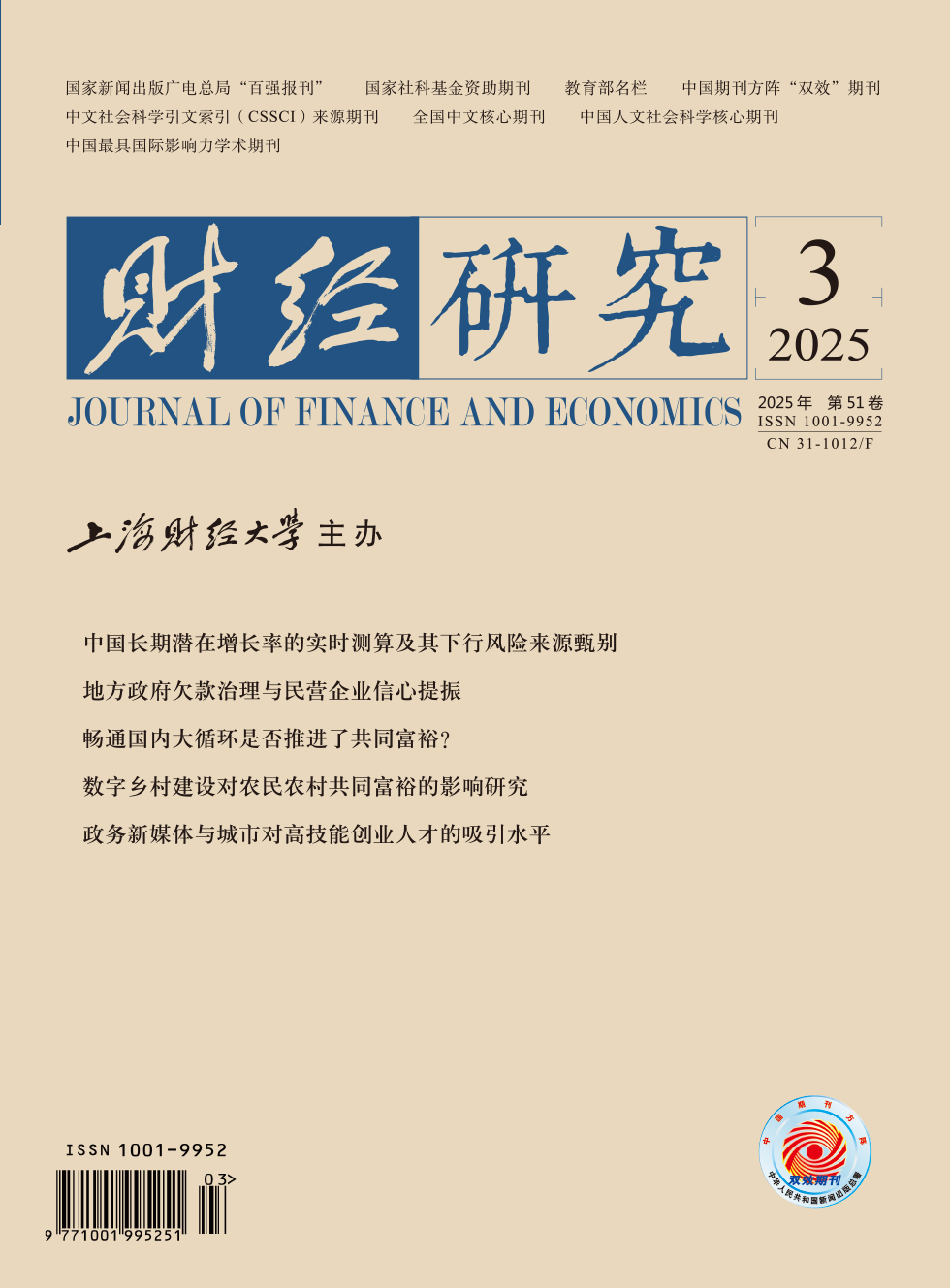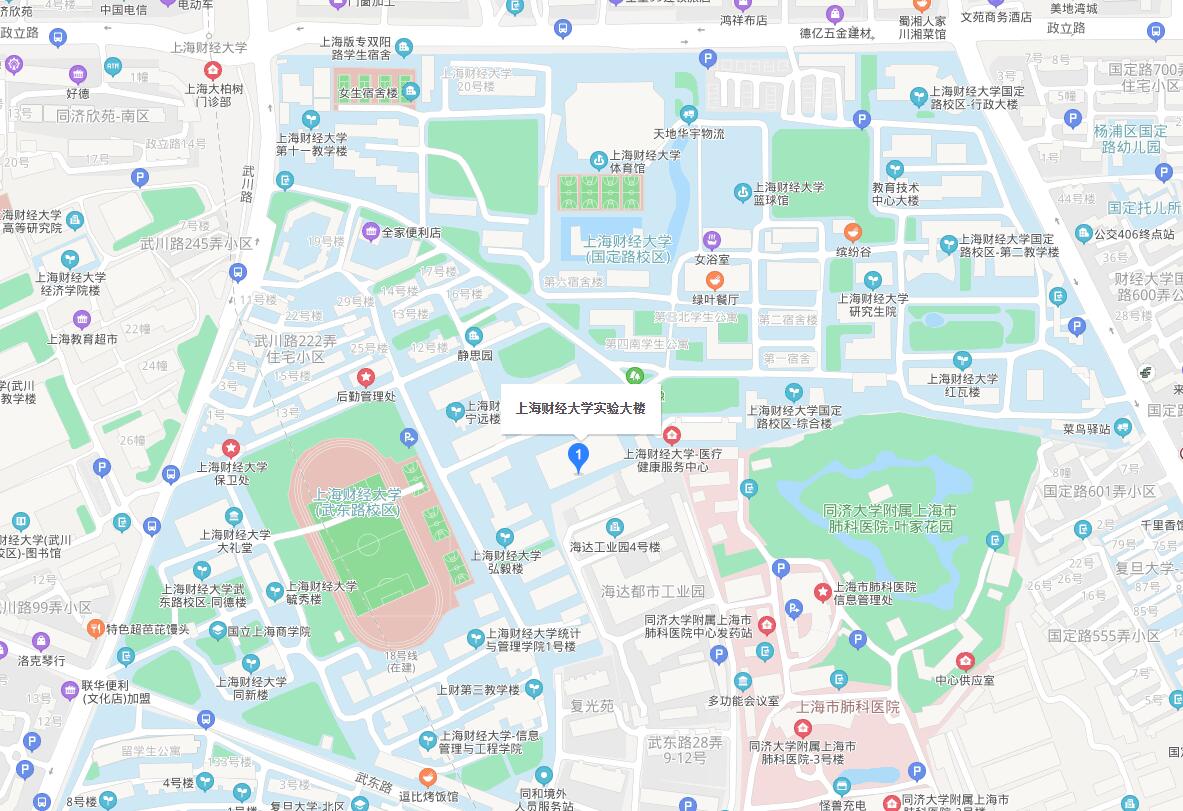高技能创业人才的流入是城市实现经济高质量发展的重要推动力。文章手工收集了283个城市政务微信公众号开通情况数据,从中国流动人口动态监测调查数据中整理出各城市2011—2018年高技能创业人才流入数量,并且构建双重差分模型展开分析。研究发现,政务微信公众号的开通增加了高技能创业人才流入城市的数量。机制分析表明,政务新媒体通过增加城市知名度、提高政府信任水平与增强创业金融支持三条路径促进城市对高技能创业人才的吸引水平。异质性分析表明,当政务微信公众号开通视频号功能与城市商业信用环境较好时,会加强该效应;当政务微信公众号的认证主体属于非党政机关与城市市场可达性较差时,会削弱该效应。此外,政务微信公众号的开通有利于提升城市创新水平与增加创业企业数量。文章丰富了政务新媒体的经济后果和城市吸引高技能创业人才的影响因素文献,对于推进基层治理现代化与城市高质量发展具有重要的政策参考意义。
政务新媒体与城市对高技能创业人才的吸引水平——来自政务微信公众号开通的证据
摘要
参考文献
3 陈凯华,赵彬彬,张超. 全球科研人员百年跨国流动规律、格局与势差效应——基于Scopus科学文献数据的实证研究[J]. 管理世界,2024,(2):1−27. DOI:10.3969/j.issn.1002-5502.2024.02.001
8 《改革》服务中央决策系列选题研究小组. 农民工等人员返乡创业的政策匹配[J]. 改革,2016,(10):73−83.
14 沈红波,寇宏,张川. 金融发展、融资约束与企业投资的实证研究[J]. 中国工业经济,2010,(6):55−64.
18 王树文. 网络时代社会协同政府治理模式构建——基于政务微信的视角[J]. 学习与探索,2016,(3):54−59. DOI:10.3969/j.issn.1002-462X.2016.03.010
23 夏怡然,陆铭. 跨越世纪的城市人力资本足迹——历史遗产、政策冲击和劳动力流动[J]. 经济研究,2019,(1):132−149.
24 邢小强,周平录,张竹,等. 数字技术、BOP商业模式创新与包容性市场构建[J]. 管理世界,2019,(12):116−136.
25 杨军. 政府公信力提升视角下的新媒体角色探究[J]. 电子政务,2015,(7):71−77.
26 杨子晖,陈里璇,陈雨恬. 经济政策不确定性与系统性金融风险的跨市场传染——基于非线性网络关联的研究[J]. 经济研究,2020,(1):65−81.
27 叶文平,李新春,陈强远. 流动人口对城市创业活跃度的影响:机制与证据[J]. 经济研究,2018,(6):157−170.
28 张三保,康璧成,张志学. 中国省份营商环境评价:指标体系与量化分析[J]. 经济管理,2020,(4):5−19.
29 Bimber B. The internet and citizen communication with government:Does the medium matter?[J]. Political Communication,1999,16(4):409−428. DOI:10.1080/105846099198569
30 Buntaine M T,Greenstone M,He G J,et al. Does the squeaky wheel get more grease? The direct and indirect effects of citizen participation on environmental governance in China[J]. American Economic Review,2024,114(3):815−850. DOI:10.1257/aer.20221215
31 Calderón C,Chong A,Galindo A. Development and efficiency of the financial sector and links with trust:Cross-country evidence[J]. Economic Development and Cultural Change,2002,51(1):189−204. DOI:10.1086/344547
32 Callaway B,Sant’Anna P H C. Difference-in-Differences with multiple time periods[J]. Journal of Econometrics,2021,225(2):200−230. DOI:10.1016/j.jeconom.2020.12.001
33 Chang T C. Renaissance revisited:Singapore as a ‘global city for the arts’[J]. International Journal of Urban and Regional Research,2000,24(4):818−831. DOI:10.1111/1468-2427.00280
34 Dutta N,Meierrieks D. Financial development and entrepreneurship[J]. International Review of Economics & Finance,2021,73:114−126.
35 Gesuele B. Municipalities and Facebook use:Which key drivers? Empirical evidence from Italian municipalities[J]. International Journal of Public Administration,2016,39(10):771−777. DOI:10.1080/01900692.2015.1034323
36 Grimmelikhuijsen S,Porumbescu G,Hong B,et al. The effect of transparency on trust in government:A cross-national comparative experiment[J]. Public Administration Review,2013,73(4):575−586. DOI:10.1111/puar.12047
37 Guo J P,Liu Z G,Liu Y. Key success factors for the launch of government social media platform:Identifying the formation mechanism of continuance intention[J]. Computers in Human Behavior,2016,55:750−763. DOI:10.1016/j.chb.2015.10.004
38 Guo Y M,He S. Does confidence matter for economic growth? An analysis from the perspective of policy effectiveness[J]. International Review of Economics & Finance,2020,69:1−19.
39 Hong H. Government websites and social media’s influence on government-public relationships[J]. Public Relations Review,2013,39(4):346−356. DOI:10.1016/j.pubrev.2013.07.007
40 Kerr S P,Kerr W,Özden Ç,et al. Global talent flows[J]. Journal of Economic Perspectives,2016,30(4):83−106. DOI:10.1257/jep.30.4.83
41 King R G,Levine R. Finance,entrepreneurship and growth:Theory and evidence[J]. Journal of Monetary Economics,1993,32(3):513−542. DOI:10.1016/0304-3932(93)90028-E
42 Ma L. What drives the adoption of social media applications by the public sector?Evidence from local health departments[J]. International Journal of Public Administration in the Digital Age,2016,3(4):76−93. DOI:10.4018/IJPADA.2016100106
43 Mergel I. Social media adoption and resulting tactics in the U. S. federal government[J]. Government Information Quarterly,2013,30(2):123−130. DOI:10.1016/j.giq.2012.12.004
44 Mossberger K,Wu Y H,Crawford J. Connecting citizens and local governments? Social media and interactivity in major U. S. cities[J]. Government Information Quarterly,2013,30(4):351−358. DOI:10.1016/j.giq.2013.05.016
45 Oliveira G H M,Welch E W. Social media use in local government:Linkage of technology,task,and organizational context[J]. Government Information Quarterly,2013,30(4):397−405. DOI:10.1016/j.giq.2013.05.019
46 Park M J,Choi H,Kim S K,et al. Trust in government’s social media service and citizen’s patronage behavior[J]. Telematics and Informatics,2015,32(4):629−641. DOI:10.1016/j.tele.2015.02.006
47 Porumbescu G A. Linking public sector social media and e-government website use to trust in government[J]. Government Information Quarterly,2016,33(2):291−304. DOI:10.1016/j.giq.2016.04.006
48 Song C,Lee J. Citizens’ use of social media in government,perceived transparency,and trust in government[J]. Public Performance & Management Review,2016,39(2):430−453.
引用本文
张星宇, 汤旭东. 政务新媒体与城市对高技能创业人才的吸引水平——来自政务微信公众号开通的证据[J]. 财经研究, 2025, 51(3): 95-109.
导出参考文献,格式为:





 1872
1872  4626
4626

